- Author: Cathy
Laser engraving gun revolutionizes firearm customization, offering an array of possibilities for personalizing designs. Whether you’re adding a logo, serial number, or intricate design, the precision and versatility of the laser engraving gun ensure both aesthetic appeal and enhanced functionality.
By understanding the material types, laser technology, and engraving techniques, you can achieve high-quality results that maintain the integrity of the firearm.
In this guide, we’ll explore the process, key considerations, and how to choose the right laser engraver for your gun.
1. What is Laser Engraving Gun?
Laser engraving gun is the process of using a laser to engrave or mark designs, text, or patterns onto the surface of a firearm. This technique is commonly used to customize guns by adding detailed engravings such as names, logos, serial numbers, or intricate artwork.
The process works by directing a focused laser beam onto the gun’s surface, typically made of metal, to remove material and create the desired design. Laser engraving is preferred for its precision, durability, and ability to produce clean, permanent markings without affecting the gun’s functionality.
By considering the distinct properties of each part—whether it’s the smooth metal of a barrel, the textured grip of a stock, or the intricate mechanisms of smaller components—you can ensure that your gun laser engraving results complements and enhances the firearm’s overall design and functionality.
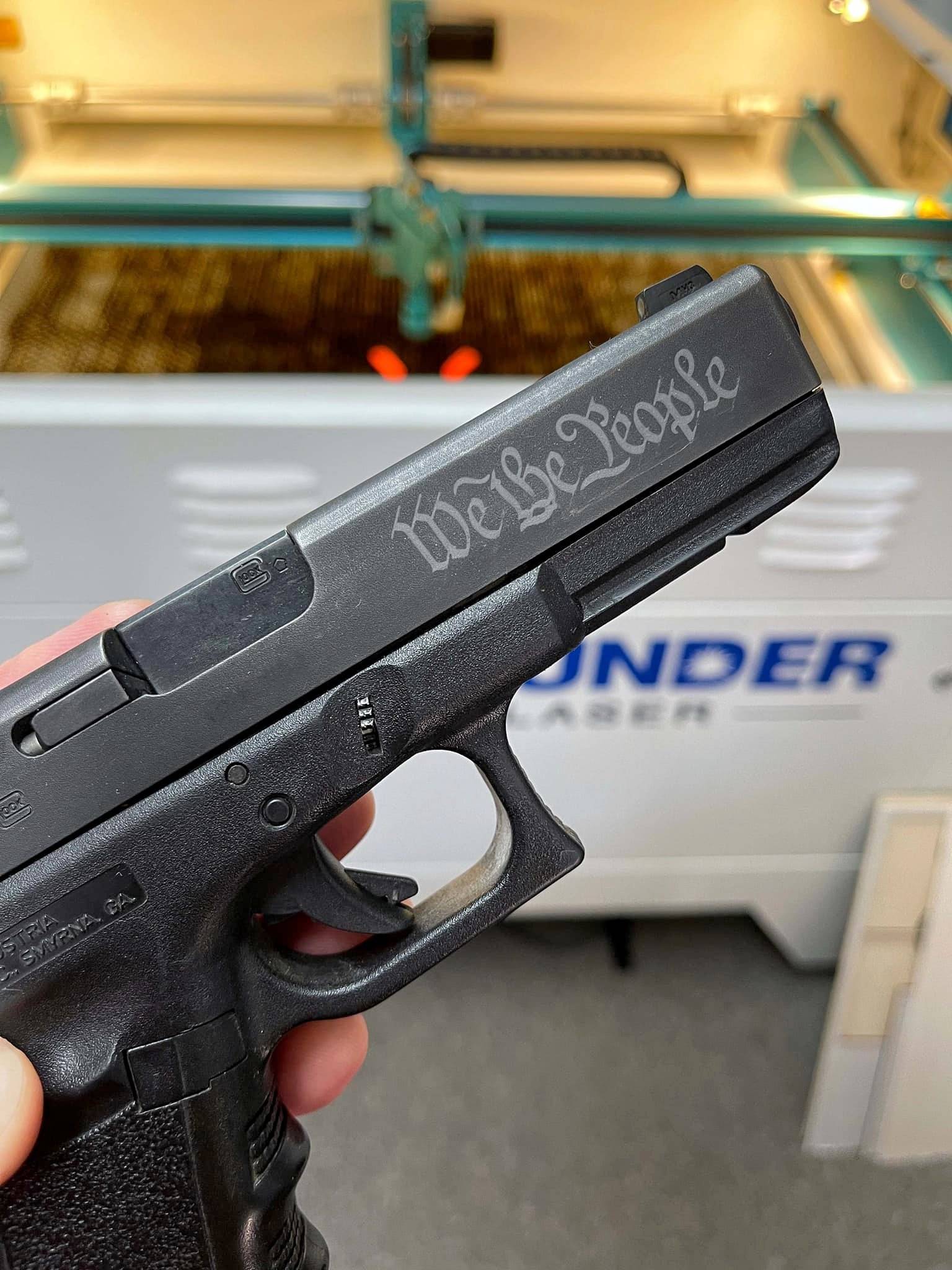
2. Is laser Engraving Gun Better Than Hand Engraving Gun?
Laser engraving gun is generally better than hand engraving for guns in terms of precision, speed, and consistency. While hand engraving offers a unique, artisanal touch, it comes with drawbacks like the time-consuming process, the need for significant skill, and a higher likelihood of errors or inconsistencies, especially in mass production.
Laser engraving gun, on the other hand, provides highly detailed and repeatable designs that can be flawlessly replicated on multiple firearms. It is faster, more efficient for production, and creates deep, durable marks that resist wear over time.
In a word, or most practical applications, laser engraving outshines hand engraving in both durability and accuracy.
Do You Need an FFL to Engrave Firearms?
Yes, you generally need a Federal Firearms License (FFL) to engrave firearms for commercial purposes in the United States. The FFL is required if you are engaging in the business of manufacturing, modifying, or customizing firearms, including laser engraving. This is because the Bureau of Alcohol, Tobacco, Firearms and Explosives (ATF) considers the laser engraving process as modifying a firearm, which requires proper licensing to ensure compliance with federal regulations.
However, if you are engraving your own personal firearm and not intending to sell or transfer it, you typically do not need an FFL. Still, it is important to ensure that the engraving does not alter the serial number or any other legally required markings. If engraving is being done on a firearm that is part of the National Firearms Act (NFA), such as suppressors or short-barreled rifles, more specific regulations may apply.
3. What Kind of Laser Do I Need to Engrave Guns?
Fiber and CO2 lasers are both used in gun engraving, each with distinct advantages for different gun components.
Fiber lasers are excellent for engraving metal parts of firearms, such as receivers, barrels, and slides. They provide precise, permanent marks on metals like steel and aluminum.
CO2 lasers, on the other hand, are ideal for engraving plastic gun parts, which are indeed common in modern firearms. They’re also suitable for wooden components and some coated metals.
Reasons for Using Fiber Lasers
- Superior metal engraving capability
- Produces permanent, wear-resistant marks on metal surfaces
- High precision for detailed engraving work on metal parts
Reasons for Using CO2 Lasers
- Lower energy consumption, resulting in more economical running costs
- versatile for materials like coated metal, plastic, etc.
- Capable of both cutting and engraving
In many cases, a combination of both laser types might be optimal for comprehensively engraving various gun components. The choice depends on the specific materials and parts you’re working with in your gun laser engraving projects.
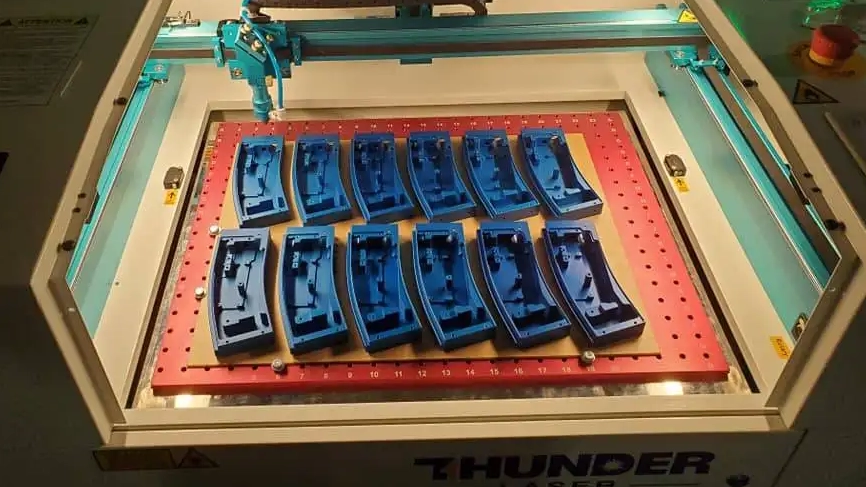
4. How to Laser Engrave Different Gun Parts?
4.1. Flat Components (e.g., grip panels, handguards)
4.2. Cylindrical Parts (e.g., barrels)
4.3. Irregular-Shaped Components (e.g., pistol grips)
4.4. Small Parts (e.g., trigger guards)
4.5. Large Flat Components (e.g., stocks)
5. Choosing the Right Laser Engraving Machine for Guns
When the gun parts you wish to engrave are primarily non-metallic, the Nova Laser Cutter is an excellent choice. It utilizes CO2 lasers, effectively processing a variety of materials including wood, coated metal, and plastics. With its large working area and high cost-effectiveness, the Nova laser cutter can quickly customize gun parts in bulk for you.
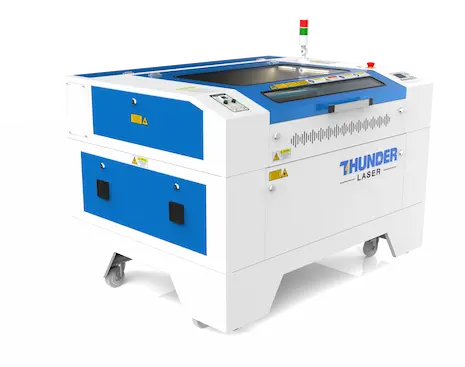
If your focus is mainly on metal gun parts, the Aurora Laser Marker, which employs fiber lasers, is your ideal option. It can swiftly and accurately create permanent markings on metal surfaces. The Aurora comes in an integrated desktop design, allowing you to conveniently start customization at home anytime.
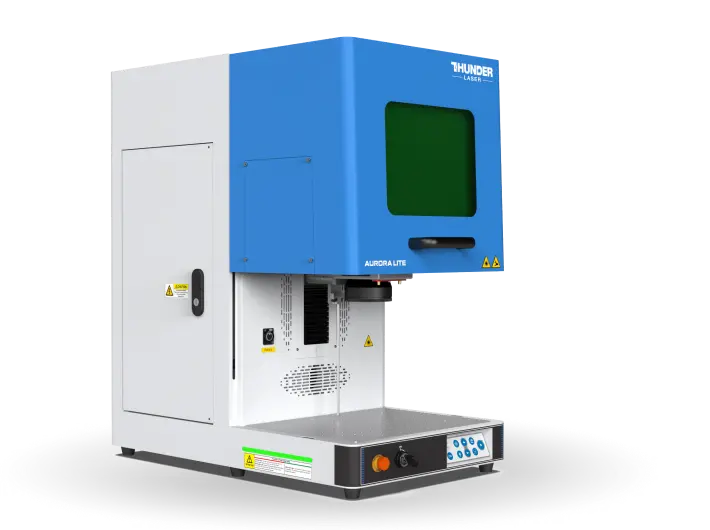
Conclusion
A laser engraving gun is a versatile and powerful tool that has revolutionized the field of personalization and customization. With its precision, speed, and ability to work on various materials, it offers both hobbyists and professionals a means to create unique, high-quality engravings.
As technology continues to advance, we can expect these devices to become even more accessible, user-friendly, and capable of producing increasingly intricate designs. Whether for personal projects, small businesses, or industrial applications, the laser engraving gun has proven to be an invaluable asset in the world of creative manufacturing.
As we look to the future, it’s clear that lasers will continue to play a significant role in shaping how we personalize and add value to customize guns.
FAQs About Laser Engraving a Gun
Q1. Can I laser engrave a gun barrel?
Yes, gun barrels can be laser engraved. Laser technology allows for precise and detailed markings on plastic or metals. But, it’s essential to use the correct laser settings and techniques. It can help you avoid affecting the structural integrity of the barrel. It can also help you avoid compromising its performance.
Q2. Do I need a fiber or CO₂ laser engraver for guns?
For metal parts of guns, a fiber laser engraver is recommended. If you’re engraving polymer or plastic components, a CO₂ laser engraver works better.
Q3. Will laser engraving wear off over time on a gun?
No, laser engraving creates permanent marks by altering the surface layer of the material. It’s highly durable, even under heavy firearm use.
Q4. How much does laser engraving a gun cost?
The cost of laser engraving a gun varies based on the complexity of the design and type of firearm. It may also depend on the engraving service provider. On average, this price may range from $15 to $50. Simple designs and engravings cost approximately $25. However, custom designs or extensive detailing may incur more charges.
Q5. How long does it take to laser engrave a gun?
Laser engraving time depends on the design complexity, engraving depth, and the material, but most laser engraving jobs on guns take between a few minutes to an hour.
- Tags
#laser engraving, #gun, #laser engraving gun, #gun engraving, #laser engraving machines for gun, #fiber laser, #co2 laser, #gun laser engraving cost


.png) International
International
 United States
United States
 Brasil
Brasil
 Canada
Canada
 Costa Rica
Costa Rica
 Česká
Česká
 Ελλάδα
Ελλάδα
 Polska
Polska
 Ireland
Ireland
 Portugal
Portugal
 Lietuva
Lietuva
 Россия
Россия Deutschland
Deutschland
 Britain
Britain
 Україна
Україна
 France
France
 Sverige
Sverige
 Italia
Italia
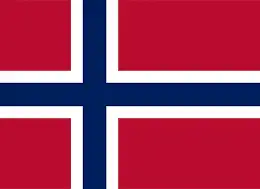 Norway
Norway
 Denmark
Denmark
 Romania
Romania
 한국
한국
 中国
中国
 ประเทศไทย
ประเทศไทย
 中国香港
中国香港
 Israel
Israel
 中國臺灣
中國臺灣
 India
India
 پاکستان
پاکستان
 پශ්රී ලංකා
پශ්රී ලංකා
 ジャパン
ジャパン
 Australia
Australia
 New Zealand
New Zealand
 South Africa
South Africa